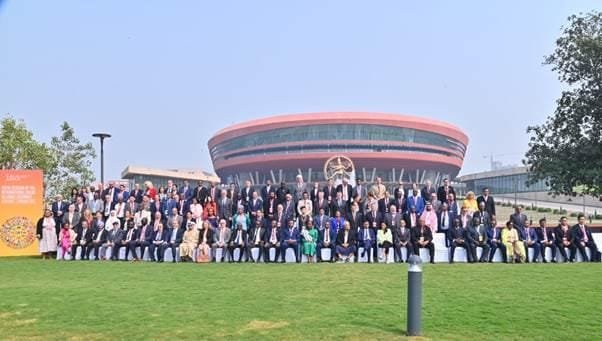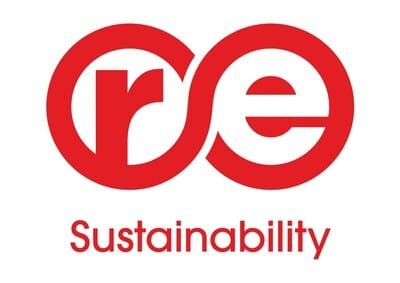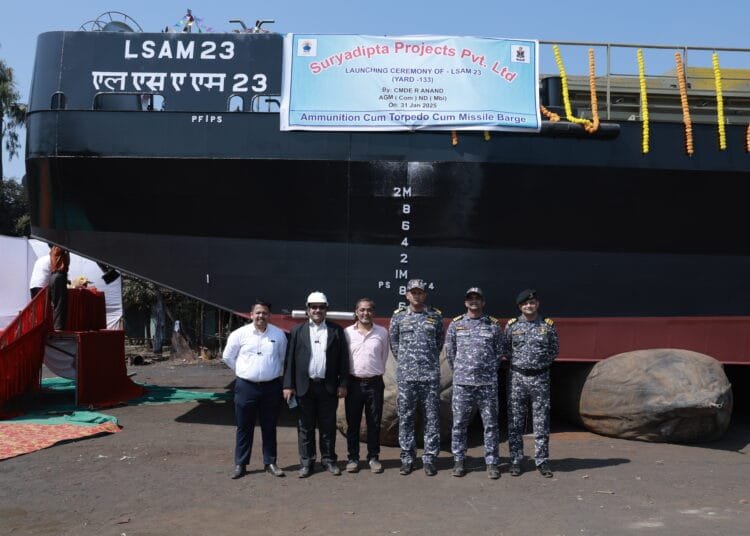Minister highlights the need to de-risk investment for private sector participation
The 6th Assembly of International Solar Alliance (ISA) has decided to increase viability gap funding for projects from 10% up to 35%, Minister for Power and New & Renewable Energy R. K. Singh said at a press conference on 31 Oct 2023.
“The ISA has a programme for VGF so that viability gap funding is available for projects in developing countries,” said Singh who is also the ISA President.
The grant provided under the mechanism is US$150,000 or 10% of the project cost (whichever is lower), per country per project. “Today, we decided that we will increase the viability gap funding to be in the range of 10% to 35% of the project cost, depending on the capacity and needs of the countries and their respective projects,” he underscored.
“This will enable more investments to flow into Africa.”
Four projects set up with ISA’s assistance were inaugurated by the Minister Singh at the ISA Assembly.
These projects are:
Solarisation of the parliament building of the Republic of Malawi
Solarisation of two rural health care centres in the Republic of Fiji, with an 8-kW solar PV system and 20-kWh battery storage capacity for each health centre
Installation of 1 solar powered cold storage of capacity 5 MT for the benefit of agricultural stakeholders at La Digue Island, Republic of Seychelles
Solarisation of the Nawai Junior Secondary school (JSS) in the Republic of Kiribati, with a 7 kW Solar PV rooftop system paired with a 24-kWh BSS
Dedicating the projects, the ISA President applauded the efforts of ISA member countries in advancing the cause of energy transition through solar energy.
Singh cited capacity building initiatives of the ISA, informing the media that the organization has been delivering results. “The organization has been providing expertise, handholding and training support. Training centres have been set up across Africa.”
The projects are a part of ISA’s initiative to launch Demonstration Projects to meet the needs of Least developed countries (LDCs) and Small Island Developing States (SIDS). The aim has been to exhibit solar technology applications which can be scaled up, and build the capacity of beneficiary member countries.
The Minister explained why the organization has a salience in the world of today and tomorrow. “The ISA has a salience since there are about 733 million people in the world who do not have access to electricity. We at ISA believe it is our mission to provide energy access to these people using renewable energy sources. And out of renewable energy sources, solar is the best, since it is available for a longer period of time, both in terms of seasons and hours per day.”
He also informed that the Assembly discussed how successful energy access and energy transition practices adopted by India can be replicated in developing countries.
“With public investment alone, we cannot ensure universal access to electricity. We need to de-risk investment so that private investment can come. Hence today, we also discussed how we can replicate what we have done in India in other countries, in terms of the techno-regulatory framework, dispute settlement mechanisms and payment security mechanisms, so that private investments can come in.
“For this, ISA has set up a fund, which has components for insurance and payment security mechanism. With these mechanisms, we are certain that investments will start flowing into Africa, especially those countries which have problems of energy access to all their people.”
The Minister underlined the importance of provision of green funds by developed countries as per their COP21 commitments.
“We also expect that green finance to become available with the funds we are setting up. As the green funds start flowing as per the commitments made by developed countries at COP21, we will have renewable energy projects being rolled out at scale throughout those countries where there is problem of energy access.” Fiinews.com









